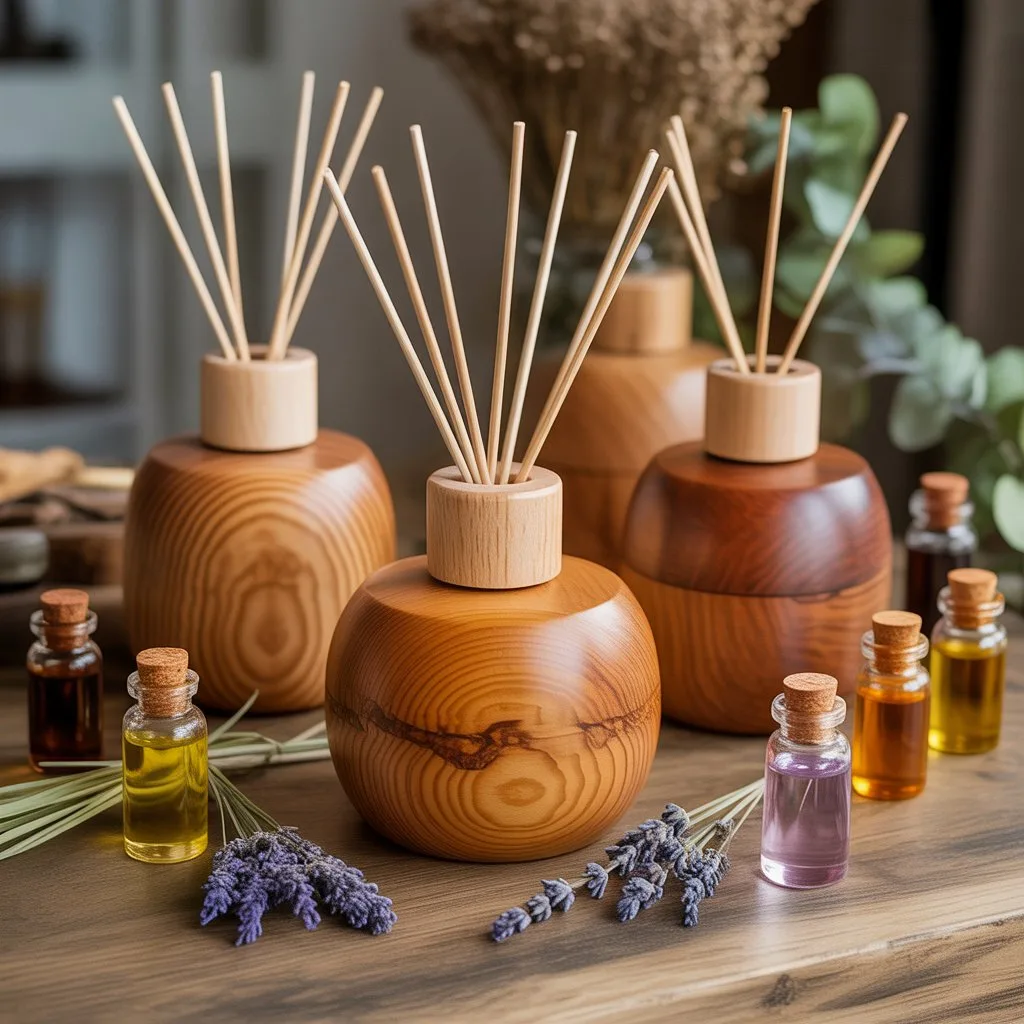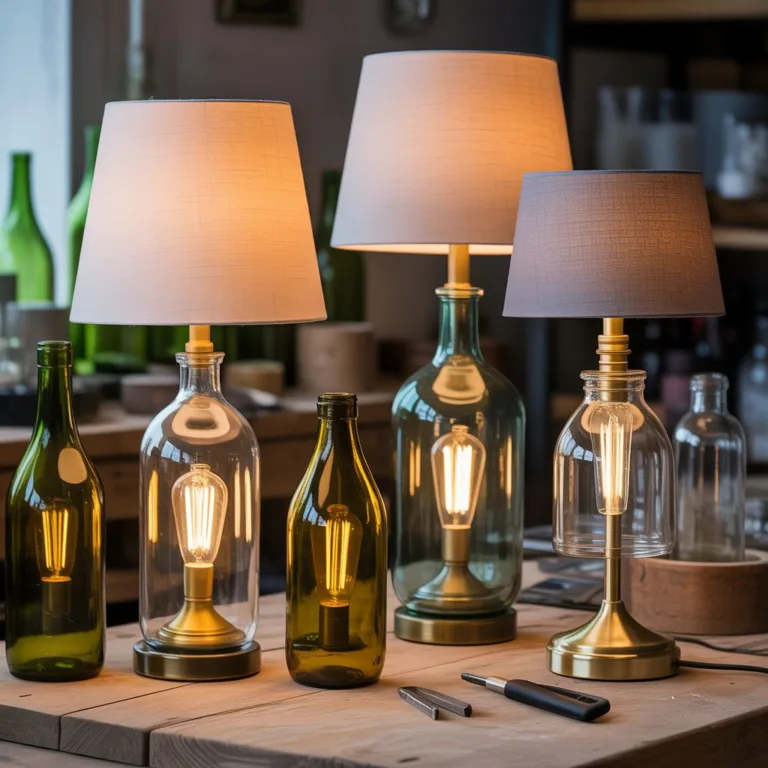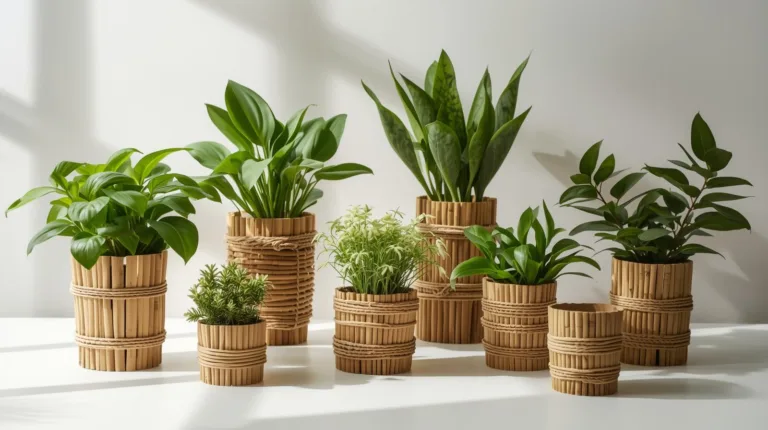Creating a naturally scented environment in your home can be both a creative and sustainable project. By combining essential oils with natural wooden diffusers, you can enjoy lasting fragrances without relying on synthetic chemicals or disposable air fresheners. These DIY diffusers not only enhance the ambiance but also provide therapeutic benefits associated with aromatherapy, including relaxation, improved focus, and stress reduction.

Using wood as a medium allows essential oils to diffuse gradually into the air, providing a subtle and long-lasting scent. This approach aligns with eco-friendly practices, as it reduces waste and avoids plastic-based products. Additionally, crafting your own diffusers offers a fun, hands-on activity that blends art, sustainability, and wellness.
Choosing the Right Wood for Diffusers
Different types of wood absorb and release essential oils differently. Selecting the appropriate wood ensures optimal fragrance diffusion:
- Balsa wood: Lightweight and highly porous, ideal for small, subtle scents.
- Cedar: Naturally aromatic, enhances woodsy essential oils like pine or sandalwood.
- Maple or birch: Smooth surfaces that allow oils to seep slowly over time.
- Teak: Durable and long-lasting, suitable for decorative diffusers.
- Bamboo: Sustainable, light, and works well for small sticks or decorative elements.
By understanding wood properties, you can match your essential oils with the best medium, creating personalized scents tailored to different spaces.
Selecting Essential Oils
Essential oils are concentrated plant extracts with potent aromas and therapeutic effects. Some popular choices include:
- Lavender: Calming and relaxing.
- Citrus oils (orange, lemon, grapefruit): Energizing and uplifting.
- Peppermint or eucalyptus: Refreshing and clarifying, perfect for study or work areas.
- Rose or geranium: Floral scents ideal for living spaces.
- Sandalwood or cedarwood: Grounding, warm aromas for bedrooms or meditation areas.
Blending oils can produce unique, customized scents. For example, a mix of lavender and eucalyptus creates a calming yet refreshing environment, suitable for both relaxation and mental clarity.
Preparing Wood for Diffusing Oils
Proper preparation ensures effective scent diffusion:
- Sand the wood: Smooth surfaces allow better oil absorption and prevent splinters.
- Cut to size: Small sticks, chips, or decorative shapes maximize surface area.
- Pre-soak (optional): For hardwoods, a light pre-soak with carrier oil can enhance absorption.
- Create channels: Small grooves or holes allow more oil to penetrate, increasing diffusion duration.
This preparation stage adds an educational element, introducing techniques for woodworking and understanding material properties.
Applying Essential Oils
Once your wood is ready, applying oils is straightforward:
- Direct application: Drip or brush oil onto the wood surface.
- Soaking: Immerse smaller pieces for a few hours to saturate.
- Layering scents: Apply different oils to separate wood pieces to rotate fragrances.
- Refresh regularly: Oils evaporate naturally; reapply every few days or weeks depending on wood type and oil quantity.
This hands-on process encourages experimentation, teaching users how scent intensity, wood type, and application methods affect the diffusion experience.
Creating DIY Diffuser Arrangements
Beyond single sticks or blocks, DIY arrangements can enhance both aesthetics and aroma:
- Vase arrangements: Place oil-soaked sticks in decorative jars or vases.
- Wood clusters: Bundle small sticks together with twine for visual appeal.
- Hanging diffusers: Suspend lightweight wood pieces near airflow for natural fragrance circulation.
- Mixed-material displays: Combine wood with stones, dried flowers, or shells for multi-sensory experiences.
Such arrangements make diffusers a creative element in home decor while supporting sustainable living.
Eco-Friendly Practices
Natural wood diffusers promote environmentally conscious living:
- Reduce plastic use: No disposable plug-ins or aerosol sprays.
- Recycle and repurpose: Use scrap wood from old furniture or bamboo sticks from packaging.
- Non-toxic ingredients: Avoid synthetic fragrances, which can contain harmful chemicals.
- Sustainable sourcing: Choose certified wood or bamboo for responsible harvesting.
By integrating these practices, you contribute to a greener home environment while enjoying personalized scents.
Benefits of Essential Oil Diffusers
Natural diffusers offer multiple benefits:
- Aromatherapy effects: Oils like lavender and chamomile help reduce stress and promote sleep.
- Mood enhancement: Citrus and mint oils energize and improve focus.
- Air purification: Certain oils have antibacterial and antifungal properties.
- Decorative appeal: Wooden diffusers can complement interior design while performing a functional role.
Combining aesthetics with wellness creates a meaningful addition to everyday living spaces.
Safety and Maintenance Tips
- Use high-quality oils: Avoid synthetic fragrances that can irritate skin or respiratory systems.
- Avoid over-saturation: Excess oil can spill and stain surfaces.
- Keep away from pets and children: Some essential oils are toxic if ingested.
- Regular cleaning: Wipe jars and sticks to prevent buildup of dust or residue.
- Rotate scents: Refresh or change oils seasonally to maintain variety.
These practices ensure that your natural diffusers remain safe, effective, and enjoyable.
Engaging Activities and Education
Creating and using natural diffusers offers opportunities for learning and creativity:
- Scent blending workshops: Explore combinations and ratios for unique aromas.
- Wood crafting lessons: Teach sanding, shaping, and finishing techniques.
- Science experiments: Observe evaporation rates and scent diffusion in different environments.
- Sustainability projects: Understand resource use, recycling, and eco-conscious choices.
These activities make the project suitable for families, classrooms, or community workshops, bridging creativity and environmental awareness.

Lucas Hartman is a DIY enthusiast and sustainability advocate focused on natural crafts and eco-friendly home décor. With a background in arts and design, Lucas creates tutorials that help families and hobbyists transform everyday recycled or organic materials into beautiful, functional projects.



